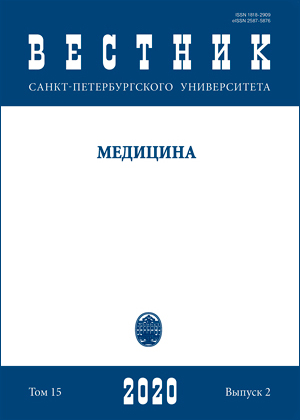The issue of nosocomial infection caused by Klebsiella pneumoniae blaNDM-type
DOI:
https://doi.org/10.21638/spbu11.2020.204Abstract
The article presents information about circulating isolates Klebsiella pneumoniae in a hospital megapolis with properties of hypervirulence and simultaneous multiresistance. The resulting K. pneumonia isolates are of particular importance due to the emergence of resistance to almost all β-lactams due to the presence of carbapenemase metal-β-lactamase. Furthermore, the isolated strains producing carbapenemases possess mechanisms of resistance to a wide range of antimicrobial preparations, and the types of infectious process caused by carbapenemazo-producing enterobacteries are characterized by a high lethality level. Microbiological, biochemical, biophysical, molecular-genetic, biological, bioinformational and statistical methods of research were used in the work. A prospective method was used to identify the source of the infections. In the first stage, a microbiological study was carried out on biomaterials obtained from patients treated in a hospital in Saint Petersburg. After a microbiological study, 52 isolates of K. pneumoniae were obtained, 53.8 % of isolates had a hypermucoid phenotype and 98 % had carbapenemases:blaNDM type — 49 (92 %), blaNDM+OXA-48-like — 3 (8 %). Isolates with two new phenotypes have been isolated (no. 2511 and no. 2512). Isolates of no. 2512 LD50 had 10*2 BAC/ml, and plasmids such as Incfib(Mar), Inchi1b, and Incr were also found, with Incr-A plasmid emitted encoding resistance to fluoroquinolone: aac(6’)-Ib-cr and to β-lactam antibiotics: blaTEM-1B. The described data confirm the opinions of the researchers about the possible formation of a new “super pathogen” — instantaneously hypervirulent and plural resistant strain of K. pneumoniae.
Keywords:
K. pneumonia blaNDM, nosocomial infection, epidemiological process, carbapenemaza, hypervirulence
Downloads
References
References
Downloads
Published
How to Cite
Issue
Section
License
Articles of "Vestnik of Saint Petersburg University. Medicine" are open access distributed under the terms of the License Agreement with Saint Petersburg State University, which permits to the authors unrestricted distribution and self-archiving free of charge.




